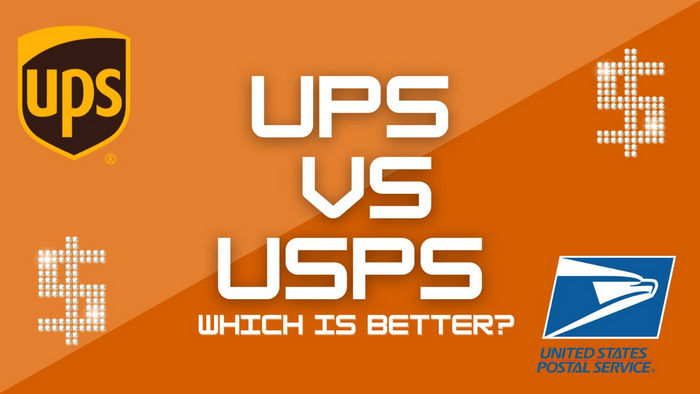5 Things to Consider - Doing eCommerce in the Middle East
According to data from Gulf Pinnacle Logistics, the growth rate of GCC's eCommerce market has increased by 7.2% annually. Besides, nearly half of the online shopping products in the Middle East come from foreign countries, and the online penetration rate of each category is also in the embryonic stage.
In sum, the Middle East eCommerce market is profitable for online sellers. Before going straight to sell products online to Middle East customers, you should view some market factors below.
3 Characteristics of the Middle East market
1. The COD service is still popular
COD stands for Cash On Delivery. In the local area, consumers have more trust in the payment method of cash on delivery. It is because the local digital payment system is immature and lacks convenience and security. Local buyers are worried about online payment security, data leakage, transaction fraud, etc.
2. Mobile traffic is considerable
Due to the growth of the local economy, the Internet systems of several major countries in the Middle East have snowballed. Throughout the region, the internet penetration is considerable. Let alone that it is now the era of mobile traffic. More mobile traffic means eCommerce businesses have more opportunities to reach potential customers and create more online purchases.
The scale of mobile traffic in the Middle East is not small. Looking at Saudi Arabia first, mobile traffic accounted for 55%. In the UAE(United Arab Emirates), mobile traffic accounted for 49%. The extremely high use rate of mobile phones has laid the foundation for the future surge in mobile consumption in the Middle East.
3. Customer's age is getting younger
From the perspective of population structure, 50% of the Middle East and North Africa population are people under 24. They are young people, and young people have a wider acceptance of consumption. Besides, they are more interested in online shopping, new products, digital and electronic products.
How do online retailers choose products for customers in the middle east?
I believe that everyone is familiar with the Middle East. Desert, camel, oasis, and oil are all synonymous with it. In the past two years, more and more eCommerce companies have turned their eyes to the Middle East market. Still, the Middle East market is slightly different from other markets.
The Middle East market is a relatively particular existence, which is quite different from English sellers in culture and language. Then, for the Middle East market, how to choose products for the local consumers?
Before choosing products, we need to know that the purpose of doing an eCommerce business is making a profit. eCommerce has relatively high operating costs such as logistics, packaging, promotion, product return, and exchange. Therefore, when choosing products for customers in the Middle east, online sellers should consider the following aspects:
1. Product Value: Choose high-margin products as much as possible.
2. Logistics Cost: Choose products that are small in size, light in weight, and not easy to break, and the logistics cost will be relatively low.
3. Customer Service: Choose products with simple functions and more durable. Products with complicated uses require user guidance or even training. That is not suitable for selling unless you're doing the eCommerce business locally because the cost of subsequent complaints and customer service will be relatively high.
Moreover, in the product selection process, sellers must consider the needs of customers. For example, the weather in the Middle East is relatively hot, and the clothing is mainly summer clothing. Summer activities are mostly swimming. You can choose swimwear and other swimming-related products.
Based on the dressing tradition of people in the Middle East, if the packaging is for women, the dressing should not be too revealing. Besides, people in the Middle East prefer white, brown, and glittering clothing combinations. These factors should be considered in the selection process. In addition, sellers need to pay attention to the product packaging.
Notes: When it comes to which products sell the best in the middle east, the demand for electronic products, home, kitchen, office, sports, and auto parts categories in the Middle East market is tremendous and increasing. Usually, they are the best-selling products in the Middle East with easy customer support.
In addition to selecting products, you can also make full use of local holidays and promotional days to promote products. Sales, for example, the relatively grand Ramadan festival in the Middle East, before and after the festival is the peak period for sellers to expand the Middle East market.
How to do eCommerce in the Middle East, first of all, we must remember four points.
1. The price is king
There is no doubt that the price of goods mainly leads to the growth of e-commerce. Companies that set prices arbitrarily without careful consideration are often unable to survive in highly competitive industries.
Although consumers are affected by many factors beyond price when making purchase decisions, this does not hinder the dominant position of price in these factors. The increasing commodity prices in brick and mortar stores have turned consumers into online shoppers. Most e-commerce companies will use their scale to negotiate directly with manufacturers to narrow the distribution gap and lower the price.
2. Improve shopping experiences
For all e-commerce companies, creating a "search black hole" for products is crucial. Although consumers may not end up maxing out their credit cards and emptying their wallets, they tend to browse and compare in many ways before making a purchase decision.
Behind this "selection black hole" is one of the most challenging steps for e-commerce companies. They must span multiple product categories and continue to build and maintain minimum SKUs. It has also caused many new problems, such as the trust crisis brought by counterfeit products and the high return cost of enterprises.
3. Reform of payment methods
The electronic infrastructure in the Middle East is improving and taking shape quickly, increasing the adoption of electronic wallets and card payments among different markets in the region. Data shows that the UAE's credit card use rate is 97%.
In comparison, Saudi Arabia's credit card use rate is about 45%. The growth trend is still strong. Among e-commerce companies, credit cards account for 30% of the payment model.
Electronic wallets, including Apple Pay and Samsung Pay, and electronic card services such as Visa Checkout and MasterCard these payment methods make online transactions a breeze. Providing users with options for trading methods makes companies that are already in a favorable position more competitive.
Despite this, cash on delivery is still the first choice among payment methods due to its simplicity. More than 50% of online buyers in the Middle East and 70% of electronic consumer product buyers in Egypt prefer cash on delivery.
4. Supply chain strategy
Logistics strategy is also a vital part. Many e-commerce companies use "same-day delivery" as their selling point. What's more interesting is that traditional retail chains have adopted this model to their online channels.
When there were fewer options in the early days, Souq and Namshi created their own logistics teams and invested heavily in transportation infrastructure. Noon, a new player in the market, uses third-party logistics service supplies like Fetchr and Aramex, to provide "last-mile delivery" eCommerce fulfillment in the Middle East. It allows Noon to focus on product selections, online sales, commerce fulfillment services, and marketing campaigns.
Most consumers don't like to pay for orders that need delivery fees. However, the delivery fee is also a big cake for the company's profits. For e-commerce companies, it will take a long time to balance the advantages of same-day logistics and high delivery fees.
Conclusion
The Middle East eCommerce market size is growing each year but running a successful Middle East eCommerce company is challenging. Knowing the target market characteristics and right products impacts whether sellers can successfully develop their e-commerce business. The factors mentioned above can be a starting point for researching the target market and audience.






